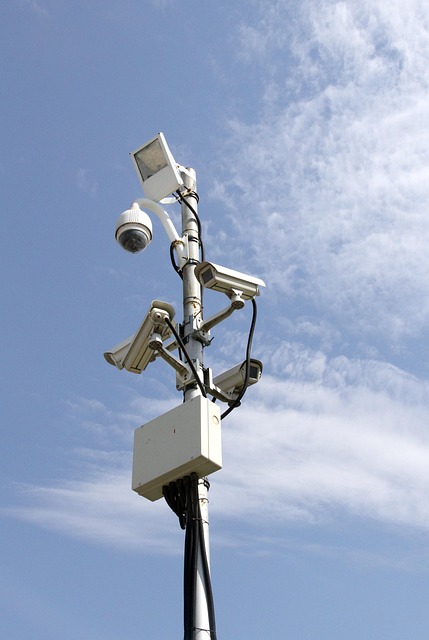The introduction of 24/7 video surveillance through mobile apps has dramatically changed how individuals and businesses monitor their environments, offering unprecedented convenience and control. This technology allows users to access live feeds from anywhere, any time, providing continuous oversight and quick responses to potential issues or emergencies. Implementing this system requires robust data transmission protocols, strong authentication, and secure cloud infrastructure for storage and processing. AI integration enhances security and offers valuable insights, while challenges include privacy concerns, data security, and the need for reliable network connectivity. Best practices involve continuous monitoring and anomaly detection, with future developments aiming to automate processes and optimize security operations through AI and ML.
“Unleash the power of constant vigilance with 24/7 video surveillance through mobile apps. This comprehensive guide explores how remote access to live video feeds is transforming security and monitoring practices. From understanding the fundamentals of 24/7 surveillance to deciphering the key components for successful implementation, we delve into the benefits and challenges of mobile video feed access. Additionally, discover best practices and future trends shaping the landscape of remote surveillance.”
Understanding 24/7 Video Surveillance via Mobile Apps
The concept of 24/7 video surveillance via mobile apps has revolutionized the way we monitor and secure our environments. With real-time access to live video feeds from anywhere, at any time, users can stay connected to their properties or businesses. This technology allows for constant observation, enabling quick responses to potential issues or emergencies.
Mobile apps offering 24/7 video surveillance provide users with peace of mind by granting them the ability to check on sensitive areas remotely. Whether it’s monitoring security cameras at a retail store, keeping an eye on home systems while away, or ensuring the safety of a loved one in a nursing home, these apps offer unparalleled convenience and control. The constant stream of video data ensures that no moment goes unobserved, enhancing security measures significantly.
Key Components for Implementing Remote Access
Implementing remote access to live video feeds via mobile apps requires several key components for a seamless experience. Firstly, robust and secure data transmission protocols are essential to ensure privacy and integrity of the video streams, particularly in 24/7 video surveillance scenarios. This involves encryption techniques and strong authentication mechanisms to protect against unauthorized access.
Secondly, cloud infrastructure plays a pivotal role by serving as a central hub for storing and processing video data. Efficient cloud servers with scalable resources enable users to access live feeds remotely without latency issues. Additionally, integration of artificial intelligence (AI) for object detection and analytics can enhance security and provide valuable insights from the video surveillance data.
Benefits and Challenges of Mobile Video Feed Access
The ability to access live video feeds from anywhere at any time via mobile apps has revolutionized remote monitoring and security. One of the key benefits is the implementation of 24/7 video surveillance. This allows businesses, homeowners, and even individuals to keep a constant eye on their properties or operations, enhancing safety and security. With real-time alerts and live feed access, quick responses to potential issues can be made promptly, whether it’s a break-in attempt, a fire, or an unexpected event.
However, challenges exist in this realm of mobile video feed access. Privacy and data security are significant concerns as remote access involves transmitting sensitive video footage over the internet. Ensuring secure connections and robust encryption is vital to protect personal information from unauthorized access or breaches. Additionally, reliable network connectivity is essential for smooth live feed transmission, as buffering or lag can disrupt the monitoring experience.
Best Practices and Future Trends in Remote Surveillance
In the realm of remote access to live video feeds, best practices and future trends in remote surveillance are reshaping how we maintain security and safety. One key practice is ensuring continuous monitoring through 24/7 video surveillance, allowing for immediate response to any incidents or anomalies detected via mobile apps. This real-time capability not only enhances security but also promotes peace of mind for users, who can remotely keep an eye on their properties or facilities from anywhere at any time.
Looking ahead, the future trends in remote surveillance indicate a move towards integration with Artificial Intelligence (AI) and Machine Learning (ML). These technologies promise to elevate 24/7 video surveillance by automating anomaly detection, facial recognition, and predictive analytics. Such advancements will not only streamline security operations but also enable proactive responses, further enhancing the overall efficiency and effectiveness of remote surveillance systems.
The integration of mobile apps for remote access to live video feeds has revolutionized 24/7 video surveillance, offering unprecedented convenience and control. By understanding key components and implementing best practices, users can harness the benefits while mitigating challenges. As technology advances, we can expect even more sophisticated features, enhancing the future of remote surveillance and security.
